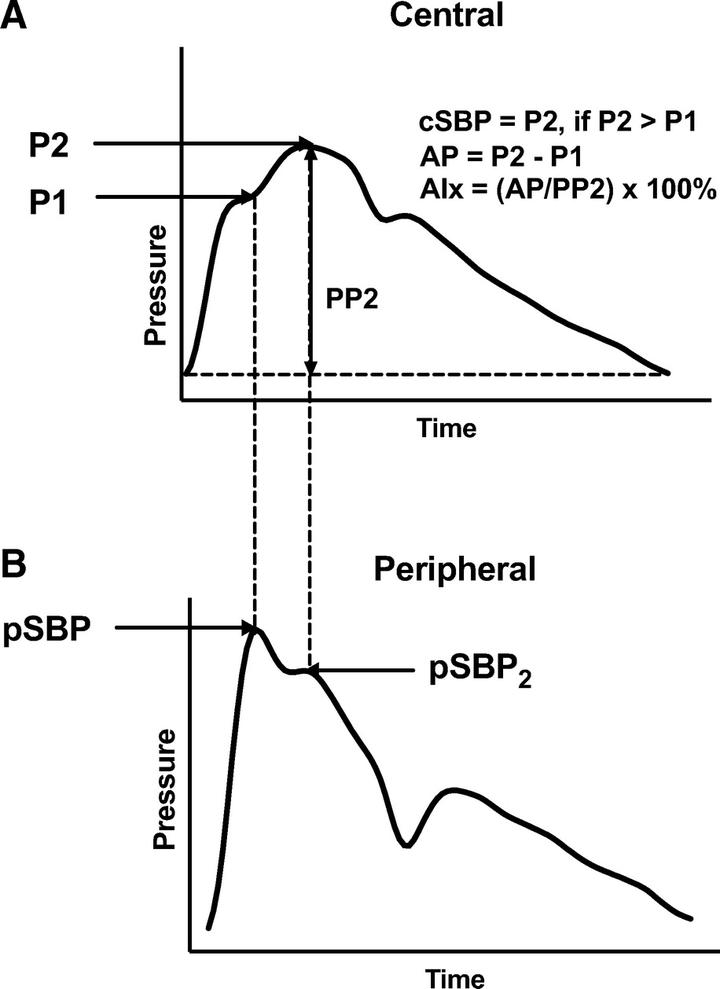Relationship between fiducial points on the peripheral and central blood pressure waveforms: rate of rise of the central waveform is a determinant of peripheral systolic blood pressure
 Image credit: Y. Li et al. (CC BY 4.0)
Image credit: Y. Li et al. (CC BY 4.0)
Abstract
Central systolic blood pressure (cSBP, the peak of the central waveform) is usually regarded as the determinant of peripheral systolic blood pressure with amplification of peripheral systolic blood pressure (pSBP) measured with reference to cSBP. However, the earlier portion of the central waveform up to the first systolic shoulder (P1) may be the major determinant of pSBP. We performed in silico simulation studies and examined previously acquired experimental data (n = 131) in which peripheral and central blood pressure waveforms had been acquired both invasively and noninvasively to examine the determinants of pSBP. Measurements were made at baseline and during perturbation of hemodynamics by inotropic and vasoactive drugs. In silico simulations using a central-to-peripheral transfer function demonstrated that pSBP is dependent on P1 and the rate of change (dP/dt) of central pressure up to the time of P1 but not cSBP. In computational simulations, peripheral reflection in the radial artery was closely related to dP/dt, and 97% of the variability in amplification as measured with reference to P1 was explained by dP/dt. In vivo, amplification of pSBP over P1 was correlated with dP/dt (R > 0.75, P < 0.0001 for all data sets), and P1 and dP/dt were independently correlated with pSBP, explaining 90% of the variability in pSBP. We conclude that P1 and dP/dt are major determinants of pSBP and that pSBP and cSBP are, in part, determined by different cardiac, central, and peripheral vascular properties.NEW & NOTEWORTHY Peripheral systolic BP is determined mainly by the first shoulder and the rate of rise of the central systolic blood pressure waveform rather than the peak of this waveform (central systolic BP). Peripheral and central systolic blood pressure are determined by different cardiac and vascular properties.